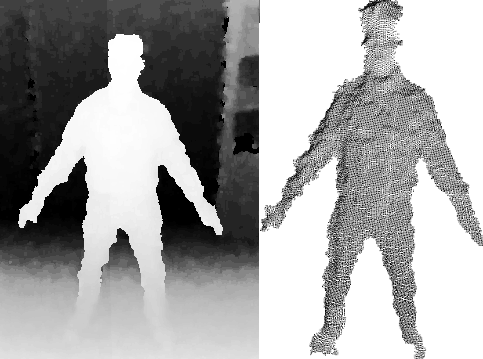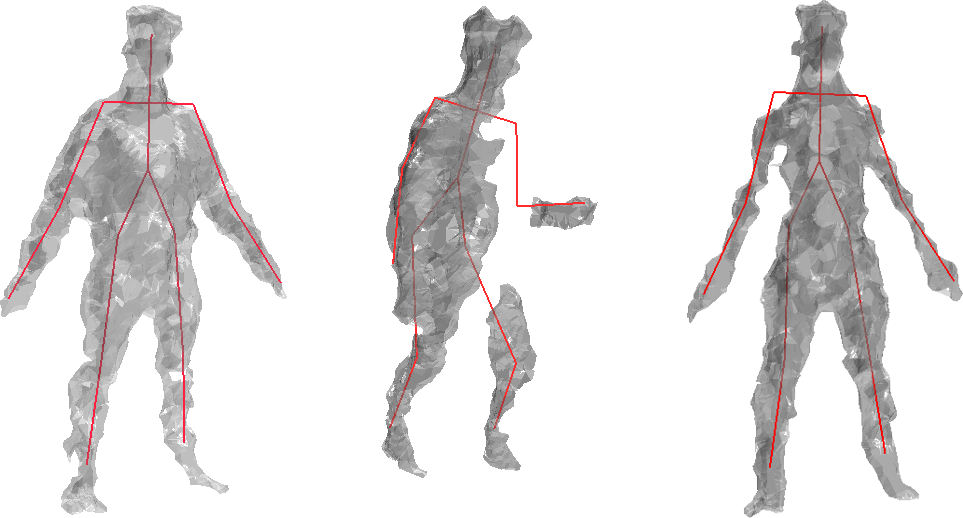
SHREC 2016: Track on
Retrieval of human subjects from depth sensor data


General description
The idea of this contest is to test geometry-based shape retrieval methods on a practical and extremely challenging task, e.g. retrieval from a database of models of the same human subject given an example. Models are only partial scans captured by a depth sensor, providing a point cloud (or a noisy and incomplete triangulated mesh) and a rough skeleton given by the OpenNI software.Dataset creation
Models have been created by placing a depth sensor in a position simulating typical surveillance acquisition and acquiring different subjects with different clothes in different poses. We acquired the same subject in three different poses with three different clothings and two different illumination conditions (18 scans for each subject). For each subject we provide:- a rough point cloud (ASCII .ply file)
- a smoothed point cloud (ASCII .ply file)
- a triangulated mesh (ASCII .off file)
- a skeleton file (ASCII .off format) with 15 vertices that are strored in the following order: HEAD(1), NECK(2), LEFT SHOULDER(3), LEFT ELBOW(4), LEFT HAND(5), RIGHT SHOULDER(6), RIGHT ELBOW(7), RIGHT HAND(8), TORSO(9), LEFT HIP(10), LEFT KNEE(11), LEFT FOOT(12), RIGHT HIP(13), RIGHT KNEE(14), RIGHT FOOT(15).
Task and procedure
We asked participants to compute dissimilarity matrices for a set of 720 scans of 40 different subjects, in order to compute response of retrieval given same scan database as query set. A training set of 180 models of 10 different subjects with known labelling (provided in princeton .cla format ) can be downloaded from this link and can be used to train supervised methods.The test set can be downloaded from this link. It is a set of 720 point clouds/filtered point clouds/skeletons/meshes, 18 for each subjects in 3 different poses, with 3 different clothes and 2 light conditions. No label information is provided with the data